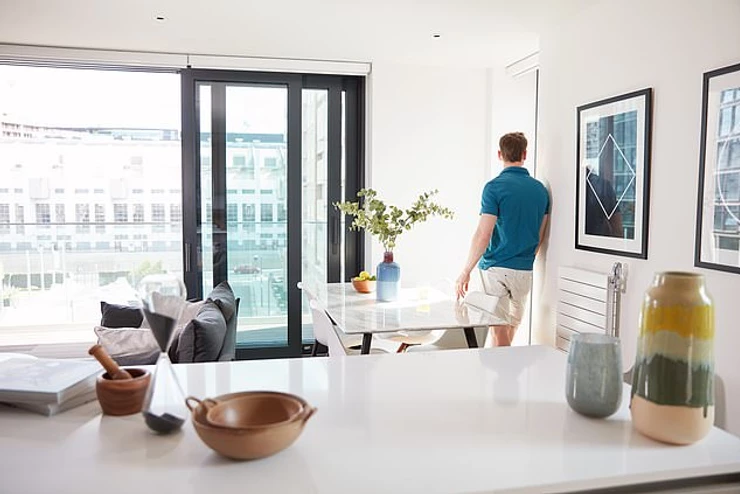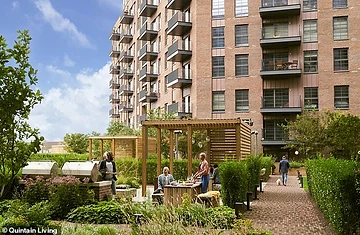For many years the Government has indicated it would like to see the UK’s private rented sector ‘professionalised’. That meant more, large scale landlords funded by pension scheme money and companies with a long-term view providing consistent service to tenants, and fewer private landlords with just one or two properties in their ownership.
The reduction of tax reliefs available to individual landlords has spurred this transition, encouraging hundreds of thousands of smaller time landlords to sell out while companies have increasingly backed large build to rent projects.

In 2019 there were estimated to be 2.66million private landlords in the UK, according to a report released in February by Hamptons International, some 222,570 fewer landlords than the number recorded in 2017.
Meanwhile, one of the UK’s largest corporate investors into British homes, Legal & General, estimated the build to rent sector was worth £10billion in 2019 and claims it is set to grow by a further £200million.
This week, L&G launched a dedicated business focused on delivering 1,000 new homes for rent in suburban locations across the UK. It is just the latest in a string of this type of announcement, illustrating companies’ conviction that tenant demand for purpose built rental accommodation is strong and will continue to grow. But is build to rent the future of British renting and a game changer for those invested in traditional buy-to-rent? And what do tenants get from this new generation of corporate landlords? Let’s takes a look.
What is Build to Rent?
UK renters increasingly have their pick of luxury properties, which landlords claim offer tenants a ‘whole new experience’ – but are renters really getting better service?
The growth of purpose-built high spec rental accommodation is largely down to build to rent schemes which have created a plethora of new apartments and houses specifically designed for renters based in cities.
Richard Berridge, head of strategy and enterprise at the online letting agent Howsy, explains that UK Build to Rent has been modelled on the ‘multi-family’ housing equivalent in the United States, which now accounts for nearly 47 per cent of the rental sector there.
Landlords are corporate investors such as pension funds and insurance companies, and partner with house builders and developers to offer a whole host of benefits including private gyms, swimming pools, roof-top bars, sports pitches, massage treatment rooms, a 24-hour concierge service and laundry collection.
Providers include Quintain, which owns large swathes of Wembley Park in London, Moda Living and Apache Capital, which are specifically focused on delivering premium apartment blocks across the UK’s regional cities, and Sigma Capital, which tends to build and own single-family homes.
Why the rise in full-service rental accommodation?
In 2012 the government set about encouraging institutions and corporations to invest in the private rental sector.
According to Berridge, corporate investors are attracted to build to rent by the opportunity to diversify their portfolios with rented residential property, while securing capital growth and reasonably stable yields from rent.
Savills reports the build to rent sector has grown by 362 per cent over the past five years, with 50,800 completed build to rent homes in the UK and a further 121,200 homes planned or under construction.
When completed, the property agent calculates build to rent will account for 3 per cent of the private rental sector. What are the benefits for tenants?
Tenants opting for purpose-built rental accommodation will on average pay a premium of 11 per cent, according to recent analysis by property consultancy, JLL.
Berridge explains: ‘Build to rent is very focused on creating something distinct from the private rental sector in terms of the quality of the homes and the quality and responsiveness of their management.

What are the benefits for tenants?
‘It is looking to address all the things that are seen by many to be broken within the private rental sector.
‘Build to rent schemes were the first entities not to charge tenant fees for instance, to waive deposits, to allow pets and permit tenants to paint and decorate their apartments as they wish. The aim is for tenants to feel like it’s their home.’
A spokesman for Moda Living, a build to rent provider currently operating in Manchester, said: ‘In contrast to many amateur landlords, we genuinely care about our tenants, both from a health and wellbeing perspective, but also in offering secure tenure and flexible, dynamic rentals with no deposits and no fees.’
Another advantage of purpose-built rental accommodation for tenants is the added security it can promise.
‘The great thing about build to rent is your landlord isn’t suddenly going to ask you to leave without any reason via a section 21 notice,’ claims Howsy’s Berridge.
‘The investment horizons for these investors are 30 to 40 years away and so they want to keep all their tenants for as long as possible.’
L&Q, another of the UK’s biggest providers of build to rent homes, promotes the long-term nature of the tenancies it offers.
‘A key benefit to renting from a long-term investor in housing like L&Q is the stability and peace of mind it offers tenants who can feel reassured they can stay for as long as they wish,’ says a spokesman.


